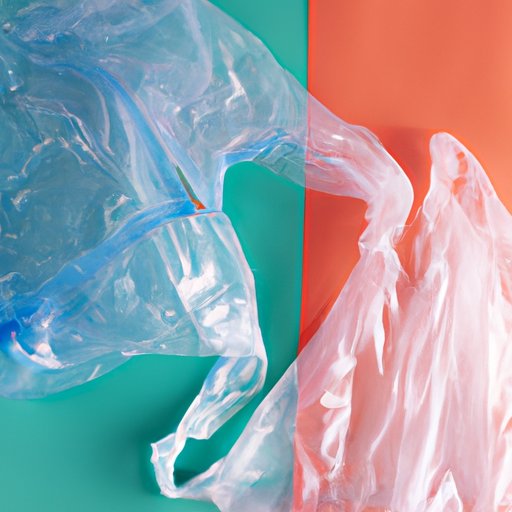Introduction
Plastic bags are a common type of disposable packaging that is used in a variety of industries, from grocery stores to retail outlets. They are convenient and cost-effective, but their use has significant environmental consequences. This article will explore how many plastic bags are used each year and the impact of global consumption on the environment.

Analyzing the Impact of Plastic Bag Usage on the Environment
The environmental impacts of plastic bag usage are far-reaching. Plastic bags are made from non-renewable resources such as petroleum, natural gas, and coal, and they can take up to 1,000 years to decompose. When they are disposed of improperly, they can end up in landfills, oceans, and other bodies of water, where they can be harmful to wildlife and ecosystems.
The Negative Effects of Plastic Bag Pollution
Plastic bag pollution has a number of negative effects on the environment. In addition to taking a long time to decompose, plastic bags can clog waterways and create hazardous conditions for marine life. They can also release toxic chemicals into the soil and water, which can have long-term health impacts on humans and animals.
The Impact of Plastic Bags on Marine Life
Plastic bags are a major source of ocean pollution, as discarded bags often find their way into the ocean and can be mistaken for food by marine animals. These animals can become entangled in the bags and suffer from suffocation or starvation. Additionally, the chemicals released by plastic bags can accumulate in the food chain and harm vulnerable species.

Examining the Global Consumption of Plastic Bags
Plastic bag usage is a global problem, with countries around the world consuming billions of bags every year. While some nations have implemented policies to reduce plastic bag consumption, others continue to rely heavily on these products.
How Many Plastic Bags are Used Annually?
It is estimated that 500 billion to 1 trillion plastic bags are used annually worldwide. This figure includes both single-use and reusable bags, but the majority of the total are single-use bags. The United States alone uses approximately 100 billion plastic bags each year.
The Contribution of Developed Nations to Plastic Bag Use
Developed nations are responsible for the majority of global plastic bag consumption. The United States and Europe account for nearly half of the world’s plastic bag usage, while developing nations contribute only a small percentage. China, India, and Brazil are among the top five countries in terms of plastic bag usage, but their contribution is still relatively small compared to developed nations.
Investigating How Many Plastic Bags are Used Annually
The amount of plastic bags used annually is staggering, and it is important to understand the consequences of this excessive consumption. The cost of producing and disposing of plastic bags is high, both economically and environmentally.
Calculating the Cost of Plastic Bag Usage
The economic cost of plastic bag usage is estimated to be between $4 billion and $5 billion per year. This includes the cost of producing the bags, transporting them, and disposing of them after use. Additionally, plastic bags require energy to manufacture and transport, resulting in increased carbon emissions.
Understanding the Consequences of Plastic Bag Overuse
In addition to the economic costs, plastic bag overuse has serious environmental consequences. As mentioned earlier, plastic bags can take up to 1,000 years to decompose, and they can release toxins into the soil and water. Furthermore, plastic bags can cause flooding and other forms of environmental damage when they are improperly disposed of.

Exploring Alternatives to Plastic Bag Use
Fortunately, there are alternatives to plastic bag use that can help reduce the amount of plastic waste produced each year. Reusable shopping bags, recyclable and biodegradable options, and compostable bags are all viable alternatives to plastic bags.
Reusable Shopping Bags
Reusable shopping bags are becoming increasingly popular, as they are durable and can be used hundreds of times. Not only do they eliminate the need for single-use plastic bags, but they can also save money in the long run, as they do not need to be replaced as often.
Recyclable and Biodegradable Options
In addition to reusable bags, there are also recyclable and biodegradable options available. These materials break down more quickly than plastic and are less likely to pollute the environment. However, they may not be as durable as reusable bags, so they may need to be replaced more often.
Conclusion
Plastic bag usage is a global problem, with an estimated 500 billion to 1 trillion plastic bags being used annually. The environmental and economic costs of using plastic bags are significant, and there is a need for action to reduce their use. Reusable shopping bags, recyclable and biodegradable options, and compostable bags are all viable alternatives to plastic bags, and their use should be encouraged.
In conclusion, plastic bag consumption has a significant impact on the environment and should be reduced. By understanding the consequences of plastic bag overuse and exploring alternatives, we can make a positive difference in our planet’s future.


